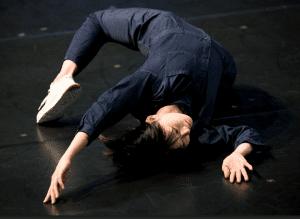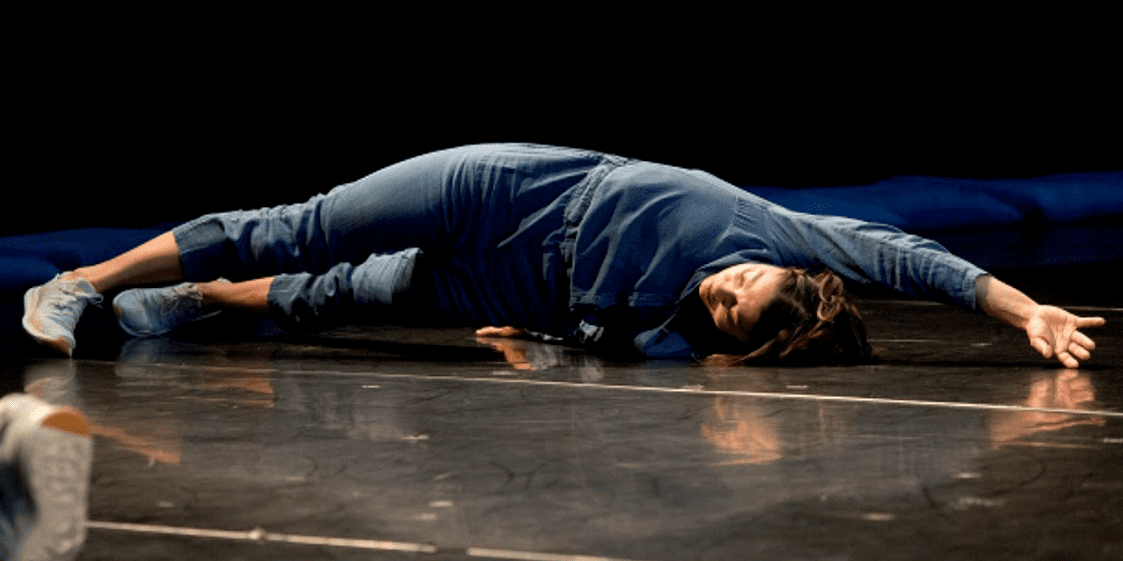On the occasion of the festival d’automne in Paris, Myriam Gourfink choreographed dance performance for the rooms of the famous Nymphéas, painted by Claude Monet between 1914 and 1926. The concept is particularly exciting: you enter the museum at night, the two musicians are already present in the two rooms of the paintings and then you wait for the dancers to appear. In front of the four largest works of art four dancers “slide, roll and ripple simultaneously in continuous time” (Isabelle Danto). Interestingly, even if there are to be four different performances, their structure and the intention of the choreographer remain the same; they aim to create “the illusion of constant expansion and of an endless whole” (M. Gourfink in an interview with I. Danto). In other words, she looks for developing a movement which comes from Monet’s work of art but exceeds it, thanks to the infinite possibilities of dance.

Glissements takes the form of an extremely slow performance serving to isolate and intensify each movement of expression. For the dancers, this show demands huge control over the body as well as an impressive sense of balance and a physical force that you do not suspect at the very beginning! You first have a sensation of relief, considering those slow and graceful movements in front of such a calming painting – like the dancer is a small nymphéa blooming little by little.
Despite this, it seems that this experimental form of living art permits only a few spectators to fall into hypnosis, whilst leaving the majority of the audience underwhelmed… and it was, unfortunately, the latter in my case. The extreme slowness is interesting in a society where everything moves rapidly and that is preoccupied with the term “productivity”. Perhaps this was the point; you are encouraged to concentrate more on the rhythm than on the movements themselves. Unfortunately, this makes staying attentive rather difficult (for me at least) despite its mere half an hour duration.
Regardless, Glissements remains a daring proposition in the contemporary art world.
Dans le cadre du festival d’automne à Paris, la danseuse et chorégraphe Myriam Gourfink propose une performance inédite au cœur du musée de l’orangerie. Devant les célèbres Nymphéas de Monet, le mouvement (chargé d’une rare intensité !) prolonge les lignes et courbes du tableau jusqu’à « rend[re] visible la danse comme un infini contenu dans le fini » (Isabelle Danto). Cela prend la forme d’une danse radicalement lente, audacieuse, mais difficile à suivre.

